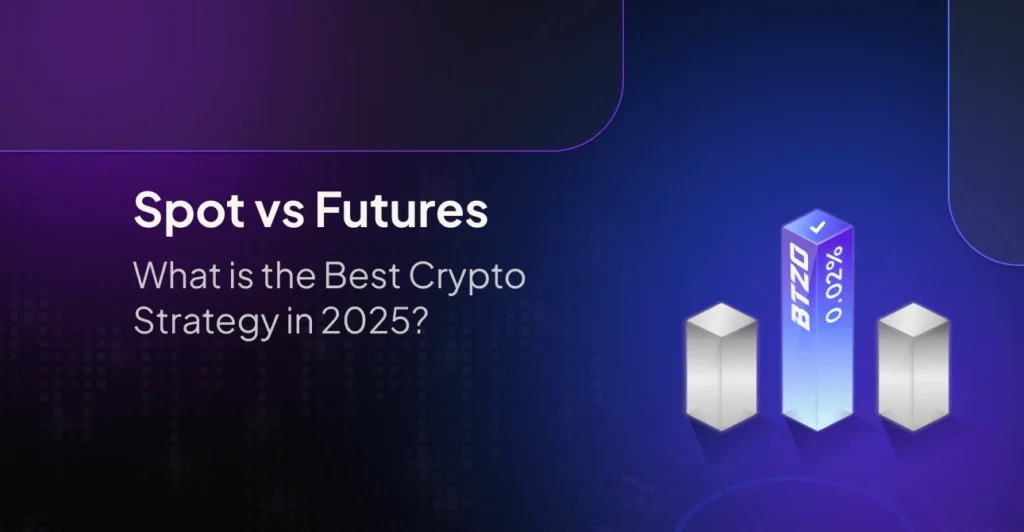Spot vs futures trading represents two fundamental approaches to digital currency markets. But which one aligns with your 2025 trading goals? While spot trading involves immediate asset ownership at current prices, futures trading lets you speculate on future prices using contracts and leverage.
This comparative guide will help you:
- Understand key differences between spot and futures trading
- Evaluate advantages, disadvantages and risks of each approach
- Choose the right approach for 2025 market conditions
- Trade both markets seamlessly on BTZO’s unified platform
Want to test both strategies? Trade spot and futures on BTZO today!
What Is Spot Trading?
Spot trading is the simplest way to buy and sell cryptocurrencies at current market prices with instant settlement. It is called Direct Asset Ownership.
Advantages of Spot Trading:
- Own crypto immediately – No contracts, just direct wallet transfers
- Lower risk – No leverage means controlled exposure
- Beginner-friendly – Easy to understand and execute
- Flexible holding – Trade short-term or HODL long-term
Disadvantages of Spot Trading:
- Limited profit potential – No leverage to amplify gains
- Requires full capital – Must pay full asset price upfront
Best for:
- New traders
- Long-term investors (HODLers)
- Those avoiding leverage risks
Want to see how spot trading works on a real platform? Read our in-depth BTZO Spot Trading Review
What Is Futures Trading?
Futures trading involves speculating on crypto prices using derivative contracts settled at a future date. It is called Leveraged Contracts.
Advantages of Futures Trading:
- Higher profit potential – Leverage (e.g., 10x-100x) magnifies gains
- Hedging opportunities – Protect against market downturns
- No need to hold assets – Trade without owning the underlying crypto
Disadvantages of Futures Trading:
- High risk – Leverage can lead to rapid liquidation
- Complexity – Requires understanding of margin, funding rates, and contract expiry
- Short-term focus – Most contracts settle weekly/quarterly
Best for:
- Experienced traders
- Short-term speculators
- Institutional hedging strategies
Which Should You Choose in 2025?
Lets discuss the timing of usage of these types of two trading techniques.
When to Use Spot Trading:
- Bull market accumulation – Buy and hold strong assets
- DCA strategies – Build positions gradually
- Regulatory safety – Avoid leverage restrictions
When to Use Futures Trading:
- Volatile markets – Profit from short-term swings
- Bearish hedging – Short-sell during downturns
- High liquidity plays – Exploit arbitrage opportunities
Why Trade Both on BTZO?
BTZO offers a unified trading experience with:
- Low fees – Competitive rates for spot and futures
- Advanced tools – Charting, analytics, and risk management
- Seamless switching – One account for all strategies
- Security first – 98% cold storage protection
Optimize Your 2025 Strategy
Spot vs futures trading each have unique advantages—spot for steady growth, futures for leveraged opportunities. In 2025, savvy traders will likely combine both approaches while using BTZO’s integrated platform for maximum flexibility.
Ready to experiment?
- New traders → Start with spot markets
- Seasoned traders → Explore futures with caution
- Hybrid approach → Use both strategically
